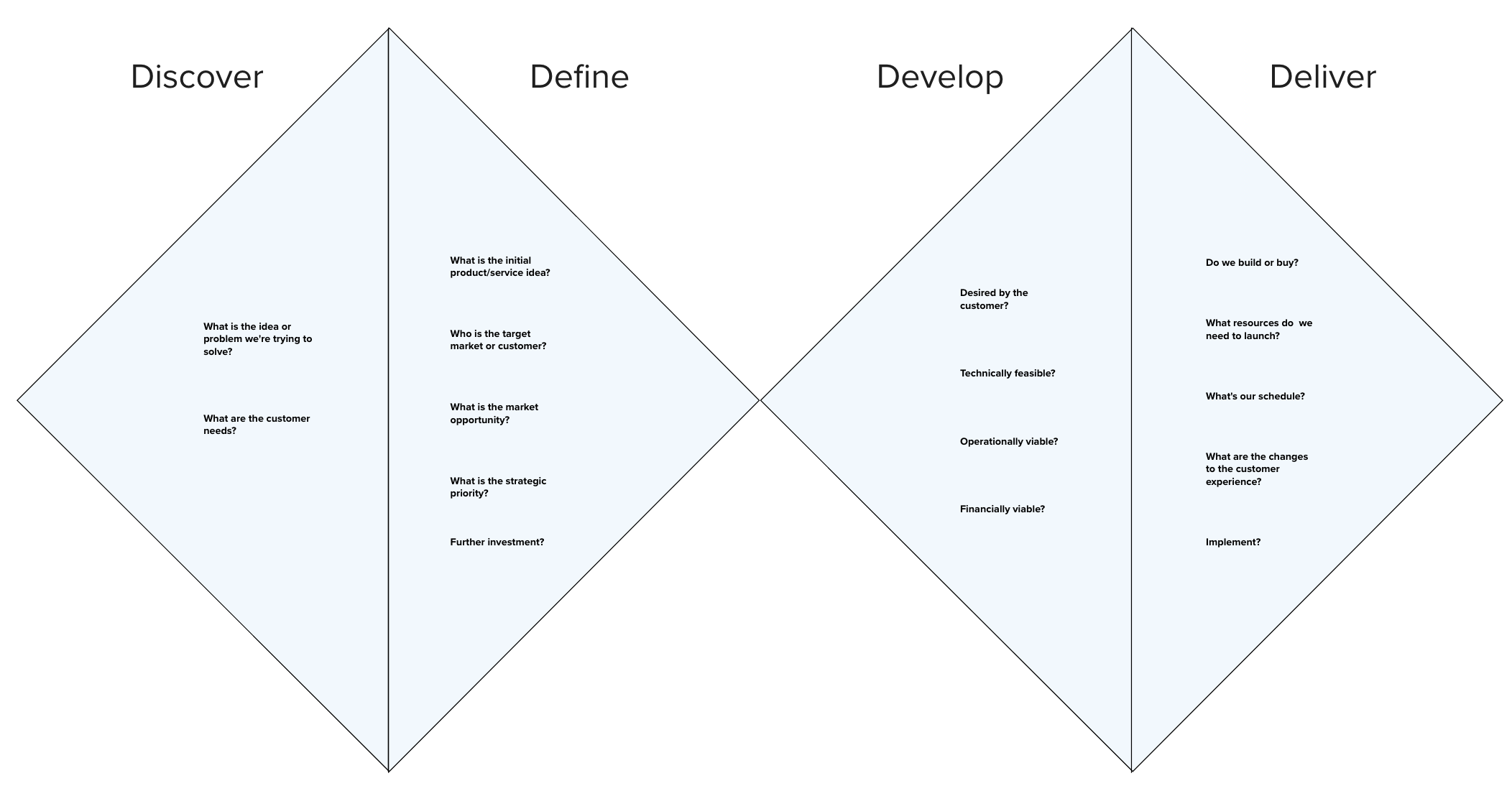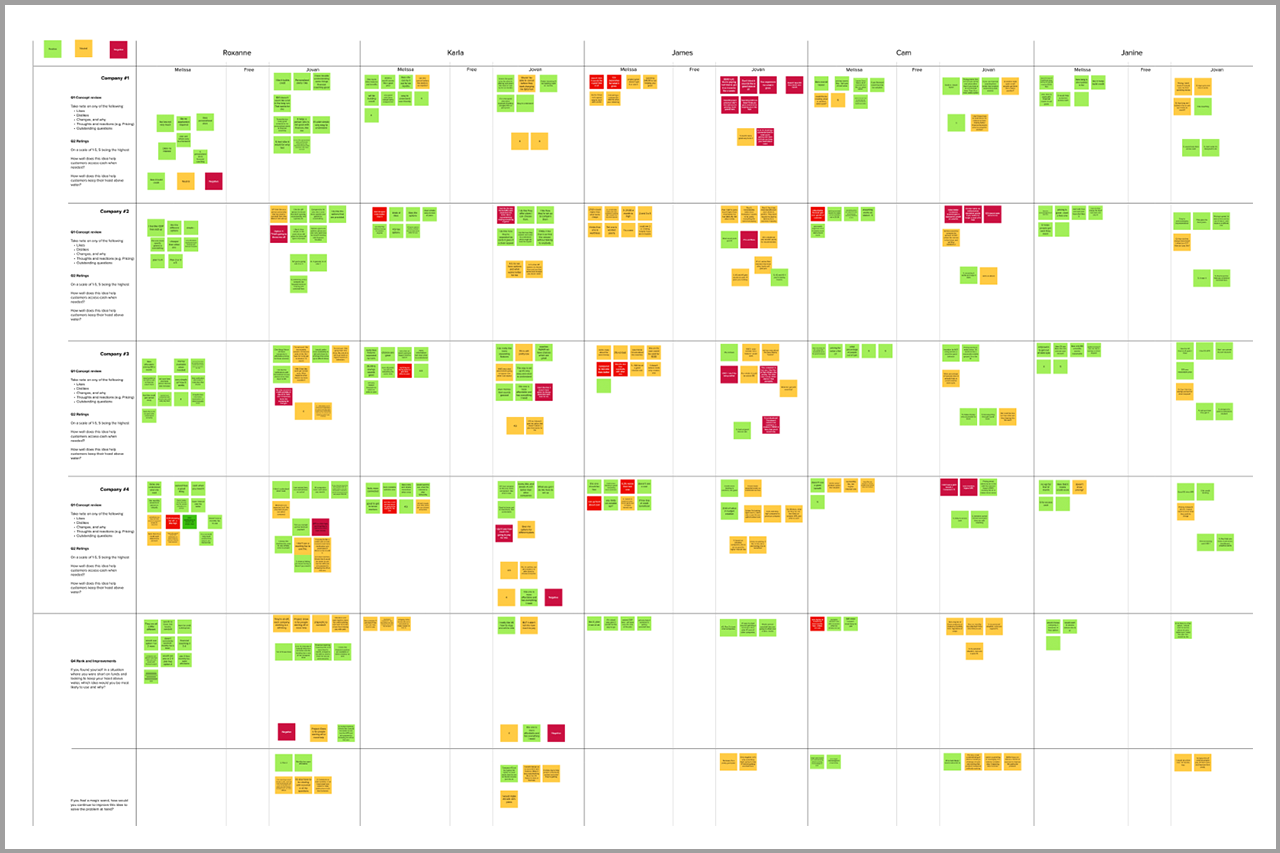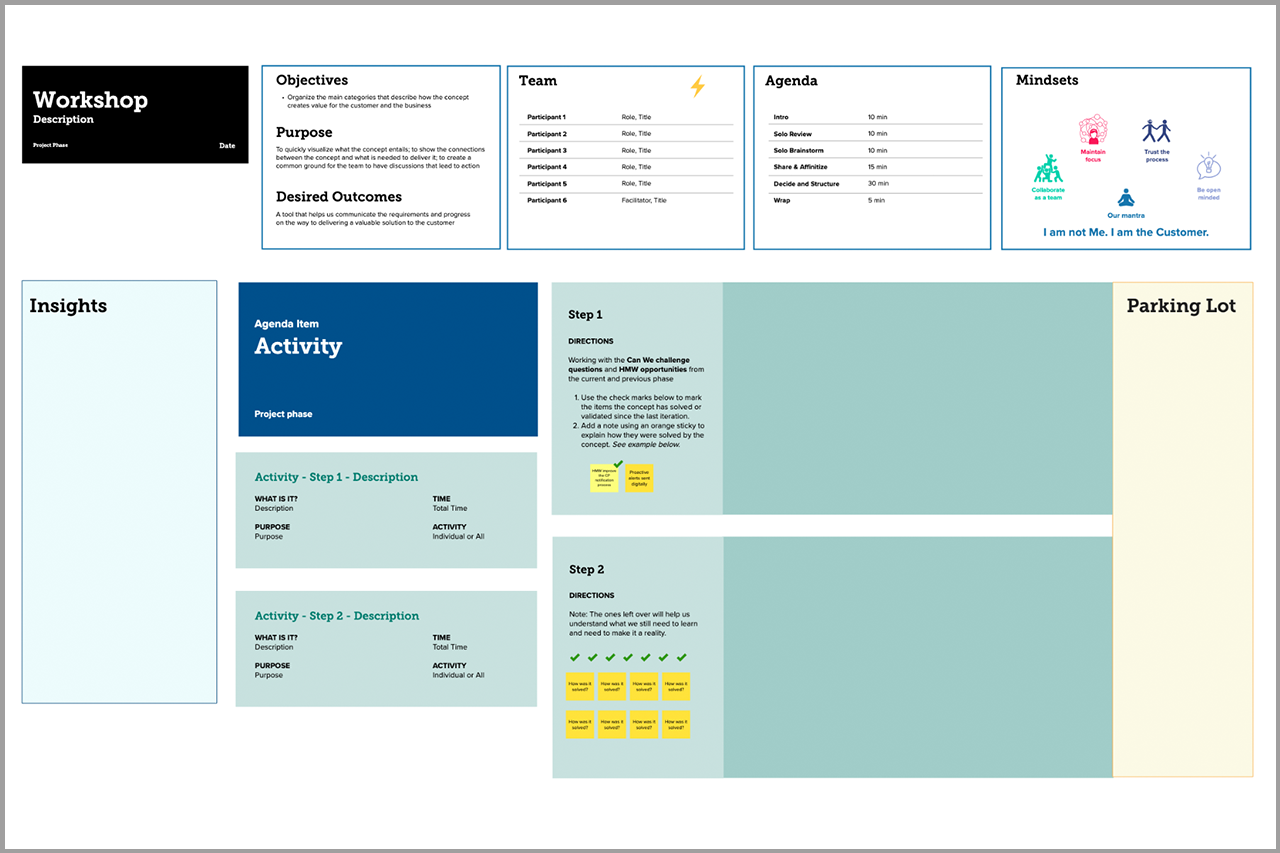Problem
In just a few years, our product design team had grown a reputation for being an exceptional project partner and group to work with. Our efforts were thorough, engaging, and transparent. But there was one glaring flaw. We took a long time to deliver meaningful results. And it was totally avoidable. In 2021, my VP assigned me the task of revamping and systematizing our design innovation framework to deliver the same meaningful results, but faster.
Approach
What were we doing? In this project, I began with a quick visualization and assessment of our current framework and design capabilities. I used Mural, a remote collaboration tool, to make the framework visual. And I used the design artifact to lead interviews with the teammates that would be working regularly with it. What worked well (or didn’t)?
Three key takeaways:
- Research was a strength, but we often over indexed on data, which increased the time needed for analysis and the generation of insights for innovation.
- Workshop participants (and co-facilitators) were being led through unfamiliar activities (and ways of working) without receiving substantial context, proper onboarding, or displaying understanding of instructions or expectations of the desired outputs and outcomes.
- Stakeholders and non-design peers enjoyed our collaborative work sessions and prioritized these on their schedules. However, loosely structured agendas allowed for lengthy discussion – a common and accepted practice – and a collective belief that we could always schedule one more session to align on a direction.
Working from what I learned, I made the following adjustments:
- Just enough research, collaboration, and visualization – I promoted an iterative research practice – shorter timelines, multiple efforts – challenging the team to work from smaller amounts of data and to prioritize patterns over numbers. I also encouraged collaborative analysis. Compared to individual analysis, we found that working together increased focus, accountability, and led to similar results, but in a shorter amount of time. And I pushed for summaries to be visual. By supplementing our insights with quotes, photos, and videos of user realities, we made it easier to develop empathy, draw conclusions, and make hard decisions.
- Purposeful onboarding – I created digital handbooks to help team members and collaborators familiarize with the way we work. The handbooks served as a crash course in how we solved problems and the specific methods, tools, and mindsets we employed along the way. They helped participants prepare for working with our team and resulted in increased trust and engagement. I also tended to our remote workshops. I increased clarity in our shared Mural workspaces updating areas and elements that had delayed us from getting started or finishing on time. It meant moving away from starter templates and designing more custom workspaces. The time spent upfront saved time in the workshops by reducing confusion and increasing focus towards being creative (or rigorous).
- Structured discussion – Human nature and design sprints helped me realize the true value of timeboxing and dot voting, but we needed additional structure. So, I added agendas into meeting invites listing topics to be addressed relevant to where we were in the process. I embedded visual schedules into remote workshop boards to explicitly highlight group discussion activities. I also added parking lots to the workshops and encouraged participants to hold each other accountable whenever a discussion felt like it was heading into the weeds. And while our team regularly utilized shared and direct channels of communication to continue conversations offline, I began announcing this option at the beginning of workshops. This action reduced the feeling that everything needed to be left on the table. While subtle in practice, this announcement made a tremendous impact on achieving objectives, desired outcomes, and completing activities on time.
Outcome
If we did nothing, our framework was effective in achieving meaningful results, but it wasn’t very efficient. By revamping and systematizing our framework, I iterated on what made it good and returned with one that was:
- Consistent – Team members knew what was expected from them and stakeholders knew what they could expect at each turn.
- Timebound – Iterative efforts and explicit phases and schedules increased confidence and group accountability.
- Repeatable – Clear process documentation in a shareable form so that anybody could learn, lead, or teach others how to contribute to solve problems with design.
And most importantly, it was primed to help us achieve meaningful results faster.




